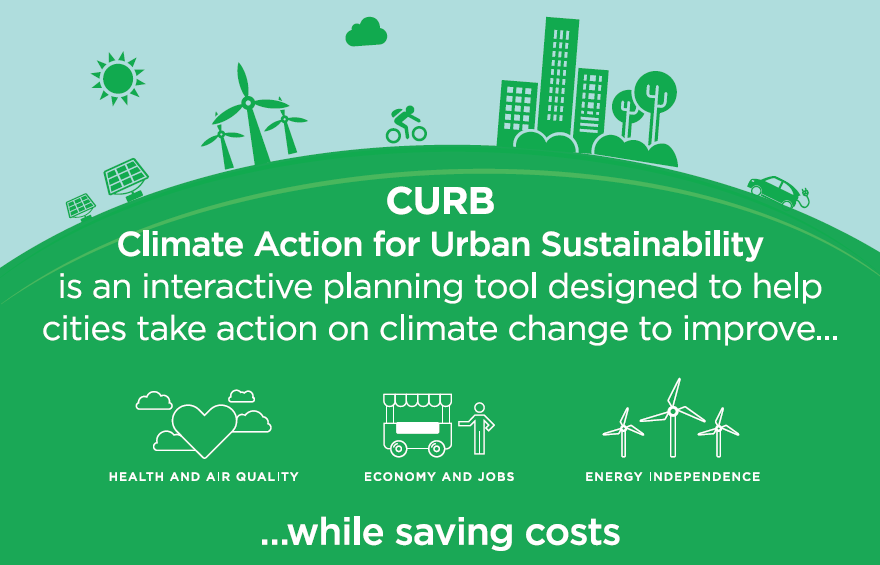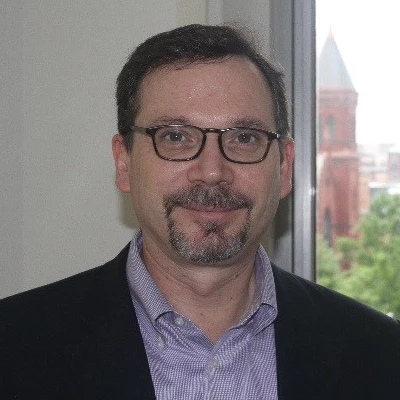Also available in: Arabic | Chinese | French | Portuguese | Spanish

If climate change were a jigsaw puzzle, cities would be a key piece right at the center of it. This was reinforced by more than 100 countries worldwide, which highlighted cities as a critical element of their greenhouse gas (GHG) emission reduction strategies in their national climate plans (aka INDCs) submitted to the UNFCCC in 2015.
Since the ensuing signing of the Paris Agreement, these countries have shifted gear to focus on turning their climate plans into actions. What if, as many of us may wonder, we could find a cost-effective and efficient way to help put cities—in developing and developed countries alike—onto a low-carbon path of growth?
CURB: Climate Action for Urban Sustainability, launched this Climate Week, is an attempt to do just that. A free, data-driven scenario planning tool, CURB can readily help cities identify and prioritize climate actions to reduce carbon emissions, improve overall efficiency, and boost jobs and livelihoods.
A joint vision for effective city planning
What CURB can do for cities owes very much to the inspiration and stories we have taken from them in developing the tool. It was a fortuitous few hours in early 2014 at the C40 Cities Climate Leadership Summit in Johannesburg, South Africa that really got the ball rolling on the development of CURB.
While in Joburg, I spent several hours with experts from C40 Cities, a network of the world’s megacities committed to addressing climate change. We discussed the challenges their members faced assessing the effectiveness of different climate policy and technology interventions.
A few hours later I was sitting next to the sustainability team from the global consulting firm AECOM. They told me about a climate action decision support tool they had created for use in North America. What quickly became clear was how aligned AECOM’s thinking was with ours and the C40’s.
We all agreed that—
- City planning tools for local authorities must be extremely user-friendly, accommodating the fact that local authorities often prefer to do the work themselves, rather than hiring a specialized consultant;
- The best tools allow users to ask “what if I do A or B or C (or A and B and C)?” meaning they can compare the relative effectiveness of different interventions when compared to local baseline conditions;
- Tools must contain built-in proxy data, to help address the data gaps that would otherwise stymie a scenario planning exercise;
- Finally, city planners often use the same tool to answer different questions, so tools must evaluate interventions on a range of metrics, such as cost containment benefits, energy demand reductions, GHG emission impacts, etc.

A global partnership for urban sustainability
That is how CURB started. Although it took some time, our collaborative effort has made CURB possible, benefiting from the fact that all partners could significantly contribute to the tool’s design, user feedback, financial support, and future distribution channel access.
Spearheaded by a WBG team working on urban development, CURB’s development drew heavily on the expertise of several dozen World Bank experts as well as local government planners in several countries. As the principal technical development partner, AECOM mobilized its vast network of global experts working on urban sustainability in both developed and developing countries. The C40 added the voices of the user, bringing additional local perspectives to the design conversation and ensuring the tool allowed users to assess interventions they were likely to consider.
To date, the C40 has deployed CURB in Johannesburg and Buenos Aires, and will launch the tool in all 86 member cities by 2020. The Compact of Mayors has also agreed to promote CURB’s use by its 6,000+ city members around the world. In addition, the WBG is piloting the tool in Chennai and Bangalore, and will soon begin training local planners from over 100 cities in East Asia, South Asia, Latin America, and other regions.
With the launch of CURB, the WBG and its partners have created a new means of directly supporting cities in reducing carbon emissions and boosting urban livelihoods. Going forward, the CURB partnership will continue working on software upgrade plans, deployment efforts, and training programs, benefiting from the generosity of Bloomberg Philanthropies and the Children’s Investment Fund Foundation.
If you work on sustainable city planning, what has your experience been in terms of scenario planning? We’d like to hear your stories and how you think CURB can help your own work.
Stephen Hammer is the Manager of Climate Policy for the World Bank Group. He was previously a lead urban specialist working on cities and climate change issues. CURB development efforts at the Bank have been spearheaded over the past two years by Silpa Kaza, Tatiana Peralta-Quiros, and Oliver Kerr, with more recent support from Neha Mukhi and Lisa Yao. For more information about how to use CURB on your projects, contact Silpa Kaza at curb@worldbank.org



Join the Conversation